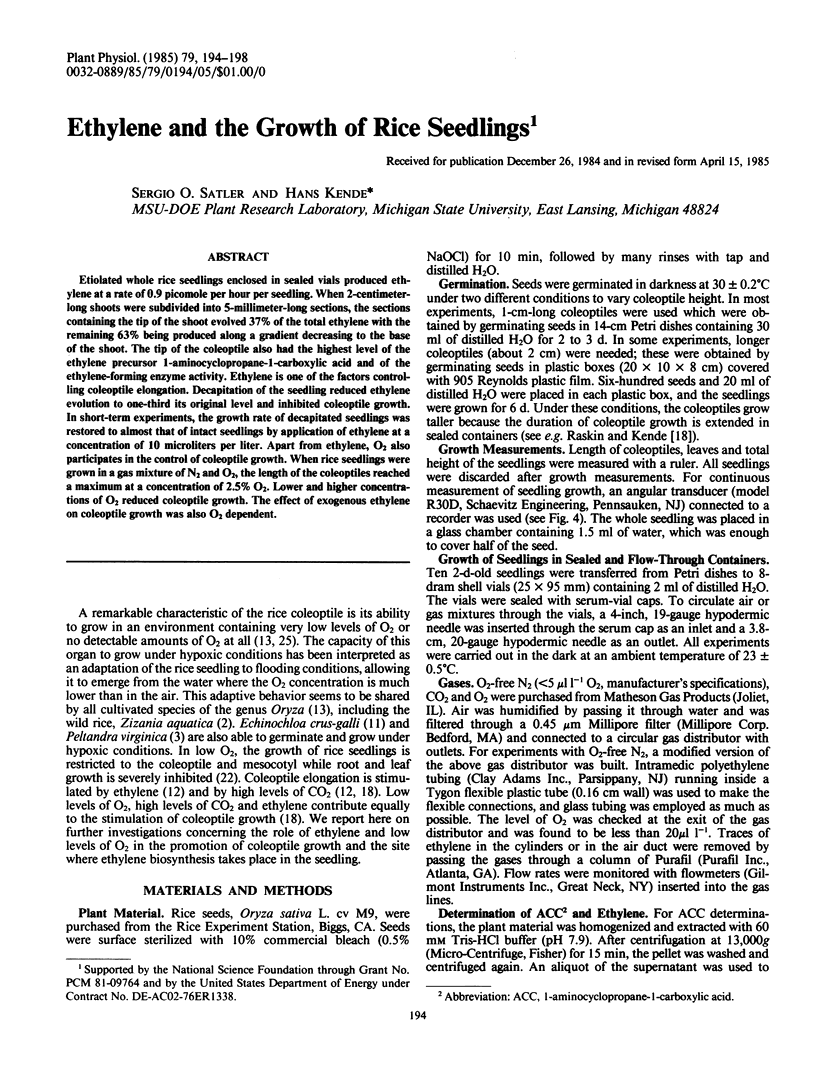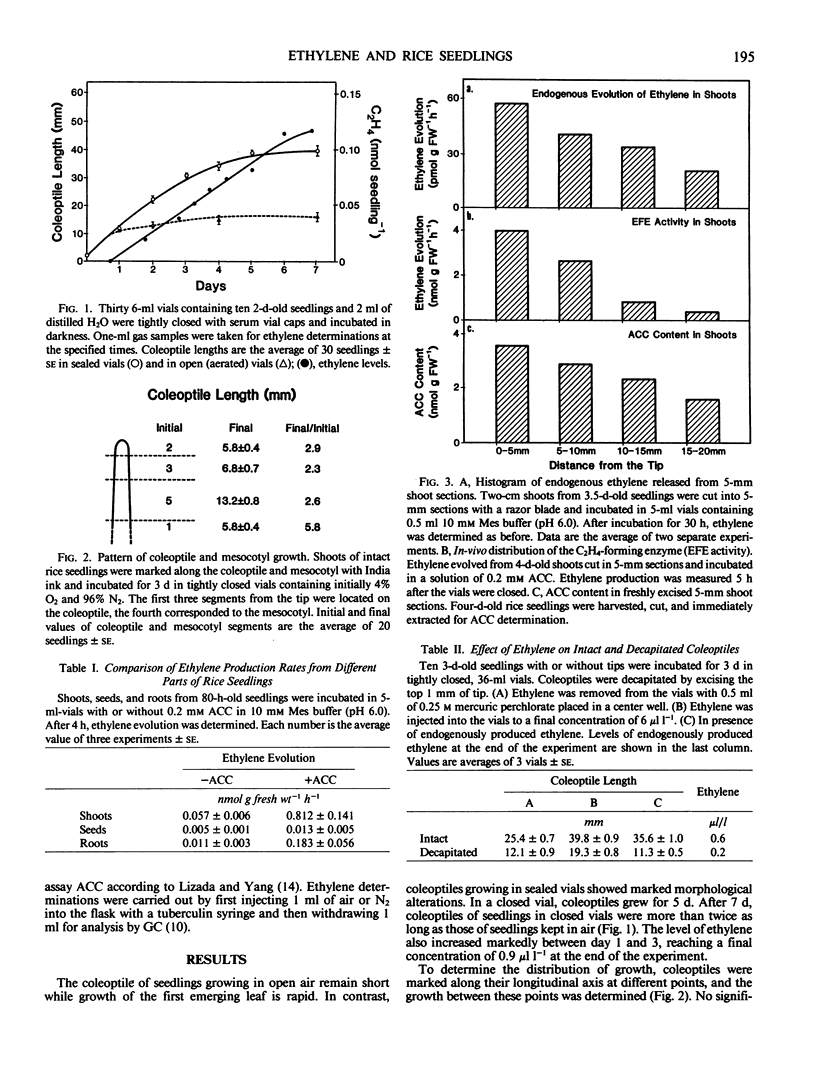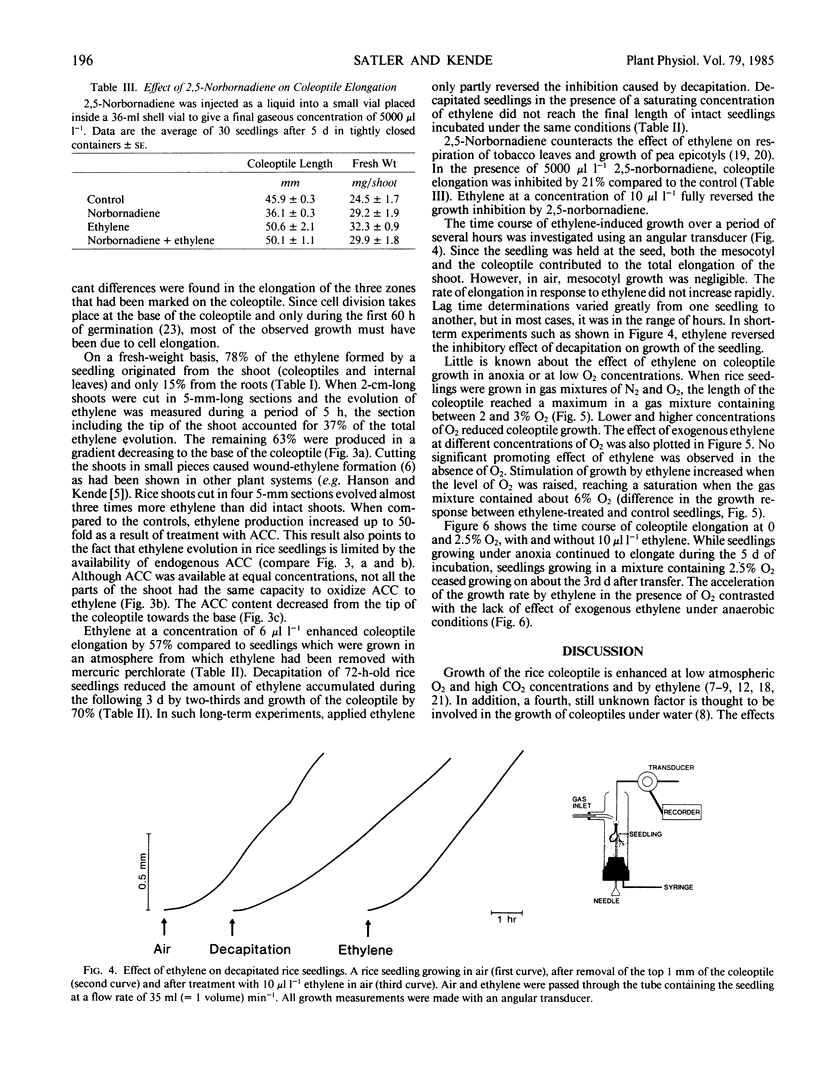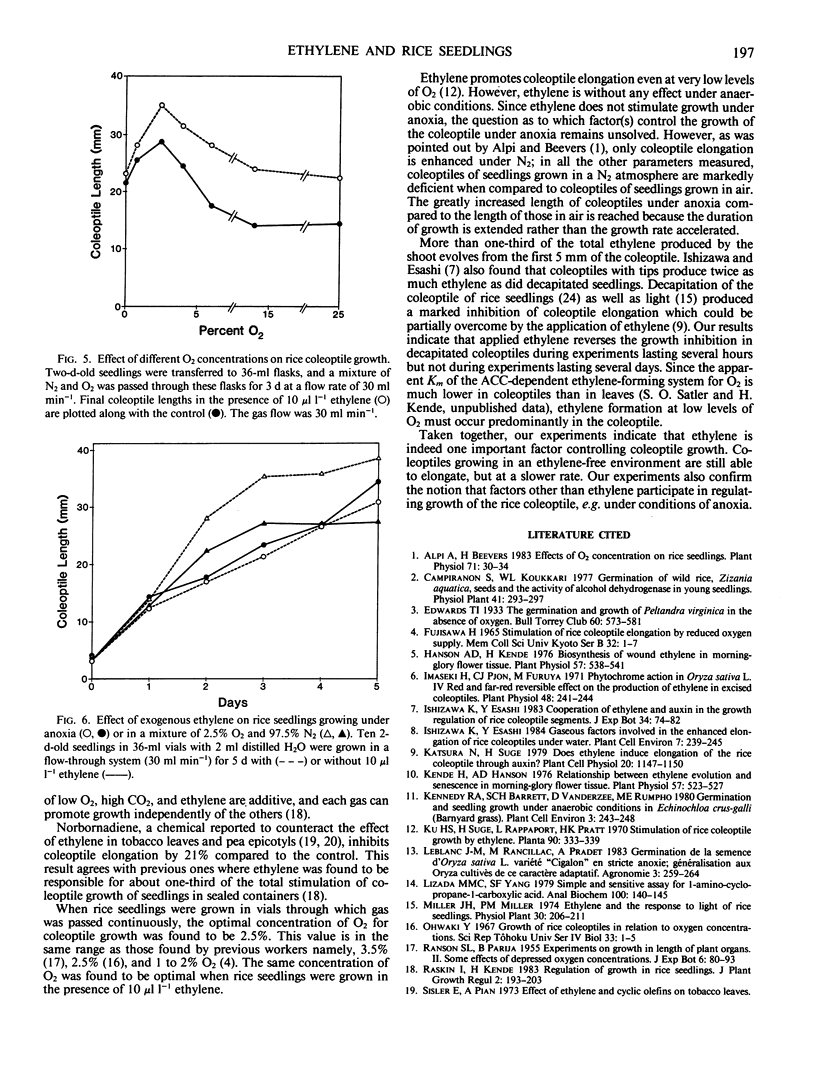Abstract
Etiolated whole rice seedlings enclosed in sealed vials produced ethylene at a rate of 0.9 picomole per hour per seedling. When 2-centimeter-long shoots were subdivided into 5-millimeter-long sections, the sections containing the tip of the shoot evolved 37% of the total ethylene with the remaining 63% being produced along a gradient decreasing to the base of the shoot. The tip of the coleoptile also had the highest level of the ethylene precursor 1-aminocyclopropane-1-carboxylic acid and of the ethylene-forming enzyme activity. Ethylene is one of the factors controlling coleoptile elongation. Decapitation of the seedling reduced ethylene evolution to one-third its original level and inhibited coleoptile growth. In short-term experiments, the growth rate of decapitated seedlings was restored to almost that of intact seedlings by application of ethylene at a concentration of 10 microliters per liter. Apart from ethylene, O2 also participates in the control of coleoptile growth. When rice seedlings were grown in a gas mixture of N2 and O2, the length of the coleoptiles reached a maximum at a concentration of 2.5% O2. Lower and higher concentrations of O2 reduced coleoptile growth. The effect of exogenous ethylene on coleoptile growth was also O2 dependent.
Full text
PDF




Selected References
These references are in PubMed. This may not be the complete list of references from this article.
- Alpi A., Beevers H. Effects of o(2) concentration on rice seedlings. Plant Physiol. 1983 Jan;71(1):30–34. doi: 10.1104/pp.71.1.30. [DOI] [PMC free article] [PubMed] [Google Scholar]
- Hanson A. D., Kende H. Biosynthesis of wound ethylene in morning-glory flower tissue. Plant Physiol. 1976 Apr;57(4):538–541. doi: 10.1104/pp.57.4.538. [DOI] [PMC free article] [PubMed] [Google Scholar]
- Imaseki H., Pjon C. J., Furuya M. Phytochrome Action in Oryza sativa L: IV. Red and Far Red Reversible Effect on the Production of Ethylene in Excised Coleoptiles. Plant Physiol. 1971 Sep;48(3):241–244. doi: 10.1104/pp.48.3.241. [DOI] [PMC free article] [PubMed] [Google Scholar]
- Kende H., Hanson A. D. Relationship between Ethylene Evolution and Senescence in Morning-Glory Flower Tissue. Plant Physiol. 1976 Apr;57(4):523–527. doi: 10.1104/pp.57.4.523. [DOI] [PMC free article] [PubMed] [Google Scholar]
- Lizada M. C., Yang S. F. A simple and sensitive assay for 1-aminocyclopropane-1-carboxylic acid. Anal Biochem. 1979 Nov 15;100(1):140–145. doi: 10.1016/0003-2697(79)90123-4. [DOI] [PubMed] [Google Scholar]
- Yamada N. Auxin Relationships of the Rice Coleoptile. Plant Physiol. 1954 Jan;29(1):92–96. doi: 10.1104/pp.29.1.92. [DOI] [PMC free article] [PubMed] [Google Scholar]


